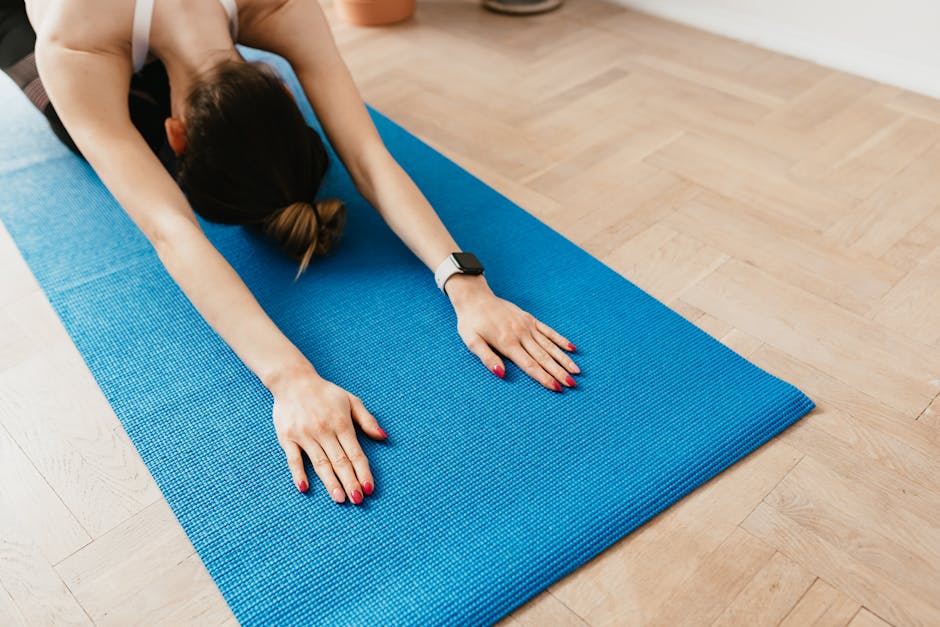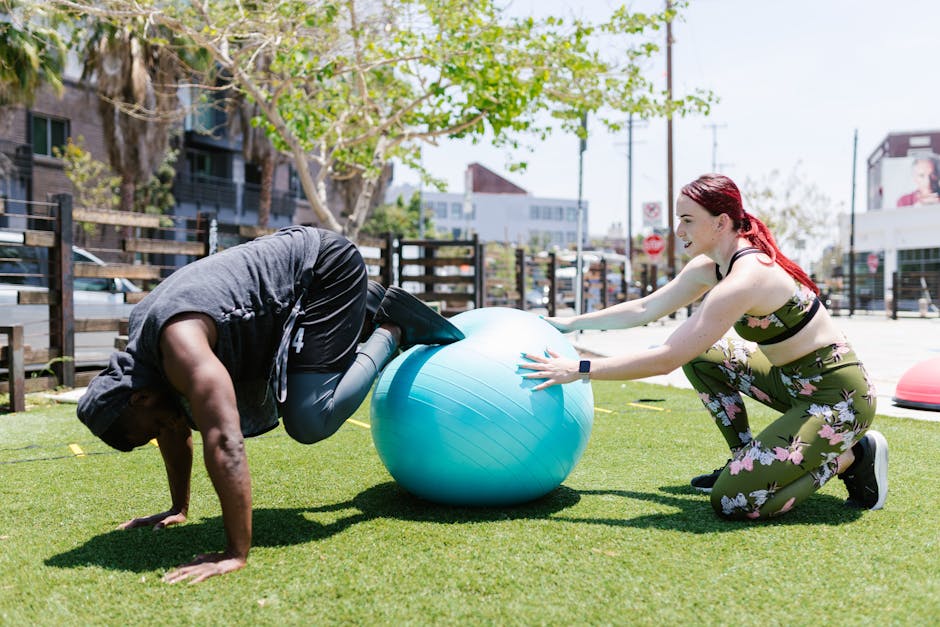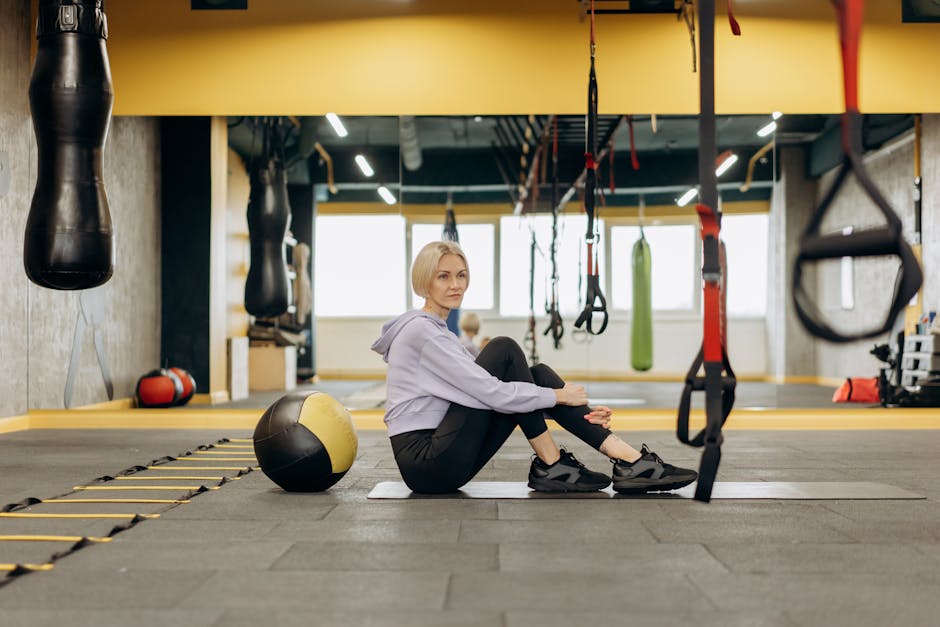How Is Fitness Different From Living An Active Lifestyle
Published by Rich Fawthrop in Fitness the 08/08/2023 at 22:26

Living an active lifestyle is often associated with being physically fit, but the two concepts are not interchangeable. While both fitness and an active lifestyle involve engaging in physical activities, their underlying principles and goals differ significantly.
Fitness is a measure of an individual's physical capability and their ability to perform specific tasks or exercises. It focuses on improving strength, endurance, flexibility, and overall physical health. Fitness is often pursued through structured exercise routines, such as weightlifting, cardio workouts, or yoga, with clear goals in mind, such as losing weight, building muscle, or increasing stamina.
On the other hand, living an active lifestyle encompasses a broader approach to incorporating physical activity into everyday life. It emphasizes the integration of movement in various forms throughout the day, rather than solely relying on designated exercise times. This can include taking the stairs instead of the elevator, cycling to work, going for a walk during lunch breaks, or participating in recreational activities like hiking , swimming, or dancing.
While fitness is primarily focused on achieving specific physical goals , living an active lifestyle prioritizes the overall well-being of an individual. It recognizes that physical activity is not limited to gym sessions or predetermined routines, but rather encourages individuals to find joy in movement and incorporate it seamlessly into their daily lives.
Furthermore, an active lifestyle emphasizes the mental and emotional benefits of physical activity. Engaging in regular exercise and movement has been linked to reduced stress levels, improved mood, increased energy, and enhanced mental clarity. It promotes a holistic approach to health, recognizing that a strong mind goes hand in hand with a strong body.
In essence, while fitness and living an active lifestyle are interconnected, they differ in their specific focus and objectives. Fitness is a goal-driven pursuit that aims to improve physical health and performance through structured exercises, while an active lifestyle encompasses a broader, more integrated approach to incorporating movement into everyday life. By understanding the distinctions between the two, individuals can better tailor their health and wellness goals to fit their unique needs and preferences.

In today's fast-paced world, many individuals strive to maintain a healthy and balanced lifestyle. Two terms that are often used interchangeably, yet have distinct differences, are fitness and an active lifestyle. While both concepts involve physical activity and well-being, it is important to understand the nuances that set them apart.
Fitness can be defined as the ability to perform specific physical tasks efficiently and effectively. It is often associated with prescribed exercise routines, structured workouts, and measurable outcomes such as strength, endurance, and flexibility. Fitness is typically focused on achieving specific goals, whether it be weight loss, muscle gain, or improving overall physical performance.
On the other hand, living an active lifestyle encompasses a broader approach to well-being. It goes beyond scheduled workout sessions and seeps into daily routines, habits, and choices. Living an active lifestyle involves incorporating physical activity into every aspect of one's life – from opting for the stairs instead of the elevator, to enjoying outdoor activities, and engaging in recreational sports.
Unlike fitness, living an active lifestyle prioritizes overall health, vitality, and longevity. It is based on the belief that being physically active is not just a means to achieve a specific goal but rather a way of life. An active lifestyle recognizes the importance of regular movement, whether it's through individual pursuits or engaging in group activities, in order to maintain overall health and well-being.
While fitness may require a structured approach, an active lifestyle embraces a more flexible and sustainable mindset. It encourages individuals to find joy in physical activities they genuinely enjoy, whether it's playing a sport, hiking, dancing, or practicing yoga. The focus is on fostering a positive relationship with physical activity and making it a seamless part of daily life.
Ultimately, the key distinction between fitness and living an active lifestyle lies in the intention behind the actions. Fitness is goal-oriented and often revolves around achieving specific outcomes , while an active lifestyle emphasizes the overall integration of physical activity into one's daily existence.
By understanding these differences, individuals can gain a deeper appreciation for the varying approaches to maintaining a healthy lifestyle. Whether one chooses to prioritize fitness or embrace an active lifestyle, both paths lead to improved physical and mental well-being. It's about finding the balance that works best for each individual's unique preferences and circumstances.
Definition of fitness

Fitness is often misunderstood as simply the act of engaging in physical exercise or going to the gym. While exercise does play a crucial role in achieving fitness goals, it is only one component of a larger concept. In order to understand the true meaning of fitness, it is important to define it accurately.
Fitness encompasses more than just physical activity; it is a state of overall well-being that encompasses various aspects of our lives. It involves maintaining a healthy body weight, promoting cardiovascular endurance, enhancing muscular strength and flexibility, and ensuring proper nutrition. Fitness is not limited to a certain age group or fitness level; it is a lifelong commitment to taking care of one's body.
Living an active lifestyle, on the other hand, goes beyond the scope of formal exercise. It involves incorporating movement into our daily routines, seeking opportunities to engage in physical activity, and making conscious choices to prioritize our health. Being physically active can include activities such as walking or biking to work, taking the stairs instead of the elevator, or participating in recreational sports.
The key distinction between fitness and an active lifestyle lies in the intentionality and holistic approach that fitness requires. While an active lifestyle encourages physical movement on a regular basis, fitness entails a more structured and intentional effort towards achieving specific health and wellness goals. Fitness involves setting objectives, understanding individual fitness levels, and implementing strategies to improve overall physical fitness.
In summary, fitness is a multi-faceted concept that encompasses not only physical activity but also nutrition, body composition, and overall well-being. It requires a dedicated and intentional effort towards achieving and maintaining optimal physical fitness. Living an active lifestyle, on the other hand, involves incorporating movement into our daily routines without necessarily following a structured fitness regimen. By understanding these differences, individuals can make informed choices and develop a lifestyle that promotes both fitness and overall health.

Fitness is more than just hitting the gym or going for a run. It involves a holistic approach to health and well-being, encompassing physical, mental, and emotional aspects. Physical fitness is often the first thing that comes to mind when we think of fitness, and it refers to the ability to carry out daily activities with ease, strength, and endurance. Regular exercise, such as strength training, cardio workouts, and flexibility exercises, helps build and maintain physical fitness.
However, fitness goes beyond the physical. It also includes mental and emotional health. Mental fitness involves having a sharp and focused mind, being able to concentrate and make decisions effectively. It is about maintaining cognitive abilities and reducing the risk of mental health issues such as dementia or depression. Engaging in activities that challenge the mind, like puzzles, reading, or learning something new, can contribute to mental fitness.
Emotional fitness, on the other hand, pertains to managing and expressing emotions in a healthy and balanced way. It involves recognizing and understanding one's own emotions, as well as being empathetic towards others. Regular exercise has been shown to have positive effects on mood and overall emotional well-being, reducing stress and promoting relaxation.
Living an active lifestyle encompasses all these aspects of fitness. It means incorporating physical activity into your daily routine, making conscious choices to engage in activities that not only benefit your body but also stimulate your mind and nourish your emotions. It could involve finding joy in activities like cycling, swimming, hiking, or dancing, while also seeking out mentally stimulating hobbies such as painting, playing a musical instrument, or practicing meditation.
The key distinction between fitness and living an active lifestyle lies in the intentionality and holistic approach of the latter. Fitness may be focused solely on physical health, with a goal-oriented mindset, such as losing weight or gaining muscle. Living an active lifestyle, on the other hand, values the overall well-being and seeks to nourish every aspect of one's existence.
In conclusion, fitness encompasses physical, mental, and emotional health, while living an active lifestyle takes it a step further to integrate all these aspects into daily life. Striving for a well-rounded and balanced approach to health and wellness is not only advantageous for individual well-being but also contributes to a more fulfilling and enjoyable life.
Components of fitness

When it comes to leading a healthy lifestyle, it is important to understand the components of fitness and how they differ from living an active lifestyle. While both concepts are related to physical activity, they have distinct characteristics that contribute to overall well-being.
1. Cardiovascular Endurance: One of the key components of fitness is cardiovascular endurance. This refers to the ability of the heart, lungs, and blood vessels to supply oxygen and nutrients to the muscles during prolonged periods of physical activity. Engaging in cardiovascular exercises, such as running, cycling, or swimming, helps improve endurance and strengthens the cardiovascular system. Regular cardiovascular exercise not only enhances physical stamina but also reduces the risk of heart disease, improves circulation, and boosts overall energy levels.
2. Muscular Strength and Flexibility: Another vital aspect of fitness is muscular strength and flexibility. Muscular strength refers to the ability of the muscles to exert force, while flexibility refers to the range of motion in the joints. Strength training exercises, such as weightlifting or resistance training, help build muscle mass and increase overall strength. On the other hand, flexibility exercises such as yoga or stretching routines improve joint mobility and reduce the risk of injuries. Incorporating both strength and flexibility exercises into your fitness routine improves posture, balance, and overall physical performance.
Living an active lifestyle, on the other hand, extends beyond the components of fitness. It involves incorporating physical activity into your daily routine in various ways, not solely for the purpose of improving fitness levels. For instance, taking the stairs instead of the elevator, walking or biking to work, or engaging in recreational activities like hiking or dancing are all examples of living an active lifestyle.
While fitness focuses on specific components to improve physical abilities, an active lifestyle emphasizes overall movement and incorporating physical activity into daily life. By embracing an active lifestyle, individuals can reap the benefits of increased energy levels, improved mental well-being, enhanced productivity, and reduced risks of sedentary-related health issues.
In conclusion, understanding the components of fitness and the distinction between fitness and living an active lifestyle is crucial for maintaining overall health and well-being. By incorporating cardiovascular endurance, muscular strength, and flexibility into our fitness routines, and embracing an active way of life, we can achieve optimal physical condition and enjoy the benefits of an active, healthy lifestyle.

Living an active lifestyle goes beyond simply working out or going to the gym. It encompasses various components of fitness that are essential for holistic well-being. Understanding these components can help make informed choices and design an effective fitness routine.
Cardiovascular endurance is one of the key components of fitness. It refers to the efficiency of the heart, lungs, and blood vessels to deliver oxygen to the muscles during prolonged physical activity. Engaging in activities like running, swimming, or cycling can improve cardiovascular endurance and promote a healthy heart.
Muscular strength is another crucial aspect of fitness. It involves the ability of muscles to exert force against resistance. Building muscular strength not only helps in physical tasks but also prevents injuries and supports overall mobility. Incorporating strength training exercises, such as weightlifting or bodyweight exercises, into your routine can enhance muscular strength.
Flexibility plays a vital role in maintaining optimal range of motion in joints and preventing muscle imbalances. Engaging in activities like yoga or regular stretching exercises can improve flexibility, allowing for better posture, increased mobility, and reduced risk of injuries.
Body composition refers to the ratio of fat, muscle, and other tissues in the body. It is an essential element of fitness as it impacts overall health and wellness. Achieving a healthy body composition through a combination of regular exercise and a balanced diet can reduce the risk of chronic diseases and improve overall performance.
Understanding these components of fitness helps in creating a well- rounded fitness routine tailored to individual goals and needs. It is important to remember that each component is interconnected, and neglecting any aspect can hinder overall progress. Striving for balance and incorporating exercises that target cardiovascular endurance, muscular strength, flexibility, and body composition is key to living an active and healthy lifestyle.
Importance of fitness

Fitness plays a vital role in maintaining a healthy and active lifestyle. It goes beyond just physical appearances and encompasses overall well-being. Here are three reasons why fitness is important in our daily lives:
1. Improved Physical Health: Engaging in regular physical activity and exercises help strengthen our muscles, increase flexibility, and improve cardiovascular health . Regular exercise not only lowers the risk of chronic diseases such as heart disease, diabetes, and obesity but also boosts our immune system, making us more resilient to illnesses.
2. Mental Well-being: Physical fitness is closely linked to mental health. When we exercise, our bodies release endorphins, which are natural mood enhancers . Regular physical activity has been shown to reduce symptoms of anxiety, stress, and depression. Additionally, staying fit can enhance our cognitive function, memory, and overall brain health. Exercise provides an opportunity to clear our minds, manage stress, and promote a positive outlook on life.
3. Increased Energy and Stamina: Regular workouts and staying fit significantly improve our energy levels and overall stamina. Engaging in physical activities increases oxygen and nutrient supply to our muscles and tissues, thus enhancing their efficiency and endurance. Being fit allows us to perform daily tasks with more ease and agility, helping us maintain an active lifestyle.
In conclusion, prioritizing fitness is essential for living an active and healthy lifestyle. Apart from physical benefits, fitness positively impacts our mental well-being, energy levels, and overall quality of life. It is crucial to incorporate regular exercise and physical activities into our routines to reap the long-term benefits of fitness.

Fitness plays a crucial role in achieving overall well-being and an improved quality of life. It goes beyond simply engaging in physical activities; it encompasses an intentional and consistent effort to maintain a healthy and active lifestyle.
One of the primary reasons why maintaining fitness is essential is because it helps prevent a wide range of health issues. Regular exercise and physical activity can reduce the risk of developing chronic diseases such as heart disease, diabetes, and certain types of cancer. By staying physically active, individuals can boost their cardiovascular health, strengthen their muscles and bones, and improve their immune system, all of which contribute to a longer and healthier life.
In addition to the physical benefits, fitness also has a significant impact on mental well-being. Engaging in regular exercise releases endorphins , also known as the "feel-good hormones," which can reduce stress, anxiety, and depression. Physical activity can also improve sleep patterns, enhance cognitive functions, and increase self-confidence and self-esteem. By incorporating fitness into our daily lives, we can promote mental clarity, emotional stability, and an overall sense of well-being.
Furthermore, maintaining fitness encourages a positive lifestyle change. It fosters discipline, determination, and commitment, as it requires setting goals and sticking to a routine. Regular exercise delivers a sense of accomplishment and satisfaction, which can motivate individuals to make healthier choices in other aspects of their lives, such as nutrition and stress management. Living an active lifestyle often translates into improved productivity, increased energy levels, and a more positive outlook on life.
Finally, fitness serves as an opportunity for connection and community engagement. Joining fitness classes, sports teams, or gym communities allows individuals to socialize, meet like-minded people, and develop new friendships. Building a support network of individuals with a similar commitment to wellness can enhance motivation and accountability, making the journey towards improved fitness and well-being more enjoyable and sustainable.
In conclusion, maintaining fitness is crucial for overall well-being and an improved quality of life. It offers numerous physical and mental health benefits, promotes a positive lifestyle change, and provides opportunities for social interaction and community engagement. By making fitness a priority and incorporating it into our daily lives, we can experience a holistically healthier and happier existence.
Definition of an active lifestyle

An active lifestyle can be defined as a way of living that involves regular physical activity and movement. Unlike fitness, which typically focuses on structured exercise programs and achieving specific physical goals , an active lifestyle encompasses a broader approach to incorporating physical activity into one's daily routine. It is about making conscious choices to stay active throughout the day, whether it is through engaging in leisure activities, adopting active forms of transportation, or participating in recreational sports.
Living an active lifestyle goes beyond just going to the gym or participating in organized sports. It is about finding ways to stay active and moving consistently throughout the day, even during mundane activities such as walking, climbing stairs, or doing household chores. The goal is to make physical activity a natural and integrated part of our lives rather than just a scheduled workout session.
One of the key aspects of an active lifestyle is the emphasis on variety and enjoyment. Instead of solely focusing on repetitive exercises in a controlled environment, individuals who live an active lifestyle seek opportunities to engage in different activities that they find enjoyable and fulfilling. This could include outdoor activities like hiking , biking, swimming, or participating in team sports and recreational games. By choosing activities that bring pleasure and excitement, individuals are more likely to maintain a consistent level of physical activity and incorporate it naturally into their daily lives.
Furthermore, an active lifestyle promotes overall well -being and improves not only physical health but also mental and emotional well-being. Regular physical activity has been shown to reduce the risk of various chronic diseases and conditions, improve cardiovascular health, enhance strength and flexibility, and boost energy levels. Engaging in physical activities also releases endorphins , which are natural mood enhancers that contribute to reduced stress and improved mental clarity.
In conclusion, living an active lifestyle involves more than just formal fitness routines and exercise regimens. It is a holistic approach that encourages individuals to find joy and fulfillment in various forms of physical activity throughout their daily lives. By making conscious choices to stay active and embracing opportunities for movement, individuals can experience the benefits of improved physical and mental well-being that come with leading an active lifestyle.
